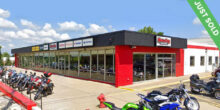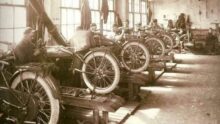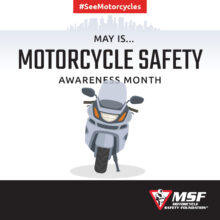Mar. 10, 2008 – Differing perspectives on Far East manufacturers
Chinese manufacturers offer views on their place in the U.S. powersports industry
By Steve Bauer
Managing Editor
INDIANAPOLIS – With 47 Chinese manufacturers occupying space in Dealer Expo’s international exhibit this year, there should be no surprise regarding the country’s influence on U.S. powersports sales.
What might come as a head turner to some, however, are the manufacturers’ views on how they are perceived by American companies and dealers, specifically their place in the U.S. market and the reputation they fight regarding poor performance, lack of parts and substandard quality control.
Market opportunities
As was evidenced by the large number of Chinese exhibitors at the Indy show, more and more manufacturers are making the leap to the U.S. market to find their niche in what they believe is a market open to quality, low-priced product.
“Many times I have people walk by and not even look at our product,” said Wang Qiuping of Zhejiang Peace Industry and Trade Co. “They just assume we have a cheap, rip-off product that doesn’t meet American emissions standards. Many call Chinese product throwaway, but I know how our standards compare with many American companies, and they are similar.
Qiuping says earlier Chinese manufacturers, with cheap raw materials and plenty of production ability, made easy money exporting inexpensive product to the States, but at the same time lacked any knowledge of the U.S. industry’s quality control, customer relations and service standards. Once a company started getting complaints from dealers regarding poor performance, parts availability or substandard assembly, most would just close down their business and open under a new name, thus protecting themselves from having to answer to U.S. authorities.
“What you are seeing today, however, is that many of those companies are gone for good because they can’t convince anyone in the U.S. to do business with them,” Qiuping said. “Now those of us that have a vested interest in succeeding in the U.S. market have to overcome the messes they left behind, which is a very difficult task.”
Windy Liu from Xmotos Co. agrees with Qiuping, noting the rapid pace of China’s exports to the U.S. meant there would be many more companies in it for the quick buck than those that were in the market to stay.
“If you look at where Chinese product is today compared to 2005, there really has been great change in quality,” she said. “Our company has been involved in the U.S. market for nearly five years, and yet nearly every new dealer who walks by our booth says the same thing: All Chinese product is the same. I find that very disturbing, because I feel as hard as we try, people lump all of us into the same category.”
Liu says in reality, the situation with Chinese product has many similarities to when Japanese companies first began exporting product to the United States.
“They didn’t understand the market any better than Chinese manufacturers do, and as you can see now only the very best are left to compete here,” she said.
Education: Slowly but surely
Both Qiuping and Liu agree the only way Chinese companies can gain the trust of American consumers is by showing consistency and acting in good faith when dealing with dealers and their customers.
“We have an important advantage when it comes to price point, because raw materials do not cost us what they do for Japanese and American companies,” Liu said. “But low prices aren’t enough for dealers anymore, you must also show that you are there to create a partnership with them, support the product and continue to produce for the long term.”
Peace Sports says it has taken measures to showcase to dealers the detail and dedication that goes into its product, including money-back guarantees on product, universal parts for most engine components and products they say are more than “cookie-cutter” replicas of Japanese or American products.
“I will not talk price with potential dealers until I have discussed Peace’s dedication to becoming a leader amongst Chinese manufacturers, and what we’re doing to achieve that,” Qiuping said. “Many are taken aback by that, and then seem to pay attention to our guarantees and programs rather than just focusing on what their profit margin will be.”
Both admit the education process is a slow one, however, as dealers tend to view all Chinese product as nothing more than a stop-gap until a customer is ready for a more expensive, better known product. It’s that belief which is the toughest to crack.
“I cannot speak for every Chinese manufacturer here, but we have not invested so much time and money to be considered a throw-away to people,” Liu said. “I have walked through the international pavilion several times this show, and can tell you it is not only Chinese manufacturers who are selling ‘substandard’ product. It is a label that puts legitimate businesses like Xmoto at a big disadvantage.”
What does the future hold?
Qiuping is quick to point out that despite the negative stereotypes, dealers at this year’s Expo where more open minded than ever, and that Peace more than tripled its dealer orders compared to 2007. Although he thinks the current state of the U.S. economy has played a part, he is adamant that dealers with a sharp eye for quality have realized that teaming with reputable Chinese manufacturers can be a pleasant and profitable venture.
“You must study the companies closely, find out what types of programs they offer and whether they can back up their guarantees,” he said. “If they are not legitimate, you will know quickly, as they will quickly try to get your signature on a sale order, or not be able to provide you with proper documentation, such as emissions certification.”
Liu says one of the biggest reasons many more Chinese companies will fail in the future is the tightening EPA and CARB emissions standards, which will stop many manufacturers from even getting their freight past U.S. customs.
“The U.S. government has tightened the loop for everyone, and companies not interested in meeting new restrictions and maintaining quality control will bow out quickly,” she said. “With every year that dealers walk by our booth and visit our Web site, they will know how serious we are about our commitment to succeeding in the American market. We are very excited about the opportunities here, and know the market here will not tolerate poor product or service when there are so many established, quality manufacturers already succeeding in the U.S.”
As Chinese manufacturers mature in the U.S. market, many dealers expect more innovation in the near future
By Steve Bauer
Managing Editor
INDIANAPOLIS – Many dealers walking past Chinese product at this year’s international pavilion likely had one thought: more ßof the same. Although Chinese exhibitors were at an all-time high for this year’s Dealer Expo, what was lacking in the minds of many was innovation and original concepts.
It’s a dilemma dealers interviewed at Dealer Expo say prevents them from purchasing Chinese product, and poses the question of whether these companies are more interested in entrenching themselves in the U.S. market for the long term, or selling copied product for an easy profit.
Stop the copycats
Wayne Baxter, an independent dealer from Cameron, Okla., says he carries only Taiwanese product because the vehicles he sees from Chinese manufacturers are mainly poorly made replicas of American, Canadian and Japanese units. The “copycat” phenomenon has become so rampant, in fact, that Baxter says it’s hard to walk by multiple booths without seeing the same product with a different logo stamped on it.
“It’s very obvious when you walk by an ATV and do a double take because it looks just like a Polaris Sportsmen, or you pass by four exhibitors who all have UTVs that are clearly copies of the Yamaha Rhino,” he said. “If these companies would invest in some research and development, I think you’d see a lot more dealers take interest.”
Other dealers say they’d like to buy Chinese product to fill a niche in their lineup but are afraid of customers’ reactions when they think they’re buying a name brand product, only to find out shortly after that it’s a Chinese replica.
“Just because you put a plastic mold of a Rhino over an engine, it doesn’t magically become a quality product,” said Marcus Cochran of Byway Motorsports in Big Falls, Mont. “Besides it being illegal, it’s easy to spot a fraud from 10 yards away. Imagine the further disappointment you’d have if you started the thing up and tried to drive it. The copycatting needs to stop, because it just hurts their reputation even more, and dealers like myself won’t give them a second look.”
Displacement, other advancements lacking
Another sore spot with dealers is the slow pace of technological advancements from China, whether it be the lack of higher displacement engines in ATVs or the continued use of two-stroke engines and carburetors in vehicles.
“A country as big as China, I would assume they would figure out a way to make a 500cc or larger engine,” said Dwayne Mitchell, owner of Mitchell Cycle in Flint, Mich. “Some of their lower displacement units are great, but if I want to carry a full line of products on the ATV side, for example, I have to fill in the gaps for my customers who want bigger machines.”
Corey Moore, co-owner of Pike Powersports outside of Knoxville, Tenn., says although he doesn’t expect fuel injection for the prices many of the units are selling for, the lack of even a universal part system for engines or other components baffles him.
“It’s getting better, but as a dealer it’s so frustrating when you carry one line of these vehicles and you can’t change out a simple part because the technology hasn’t advanced to the point where these manufacturers are able to make similar components that can be serviced with one set of tools, etc.,” he said.
Promising developments
Even with the disappointing display by some manufacturers, dealers did see increased innovation this year, especially from a few particular companies.
“I thought the choppers from Peace Industry were really nice, along with product from Hi-Bird, they really had some interesting four-wheeled vehicles that were half-buggy, half UTV that were fun to see,” Cochran said. “Both companies have active R&D departments, and it really shows through in their product.”
Other companies dealers mentioned as showcasing innovative product were Xmoto Co., Lianmei Industrial Co. and Jmstar Motorcycle Co. The general consensus is, however, that Chinese companies need to spend more time developing their own product that will define their country’s style, not copy the latest hot selling product.
“I believe that the companies truly interested in staying in the U.S. in the long term will continue to come to the show and display new, different products every year,” Moore said. “I think once these companies find their niche in the market and can prove to dealers that they care about creating new and exciting products, and not just pitching product, then you’re going to see a real shift in the attention given to Chinese companies.”







